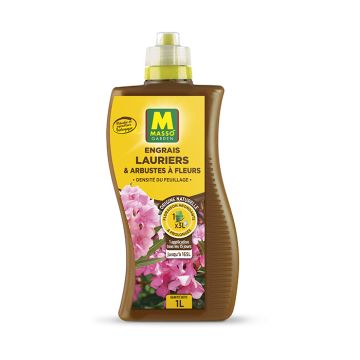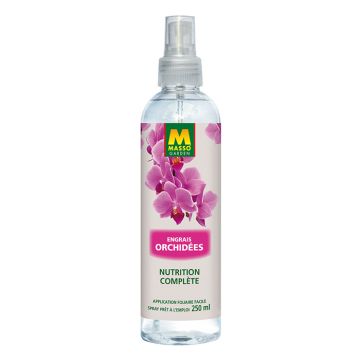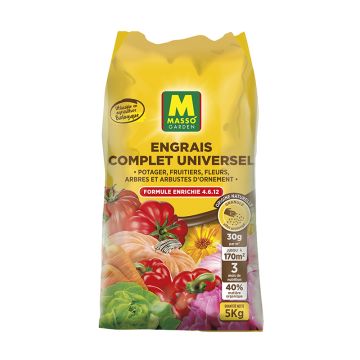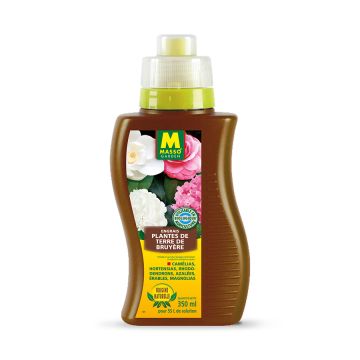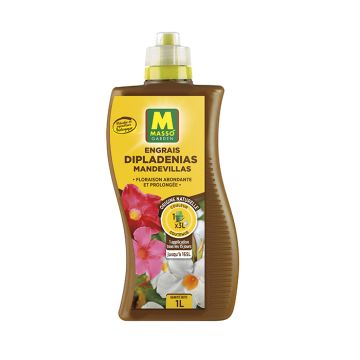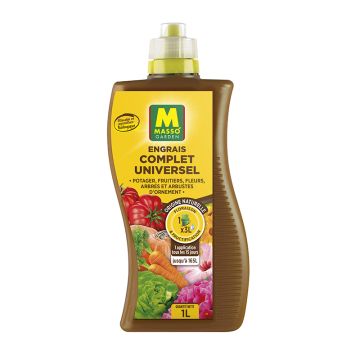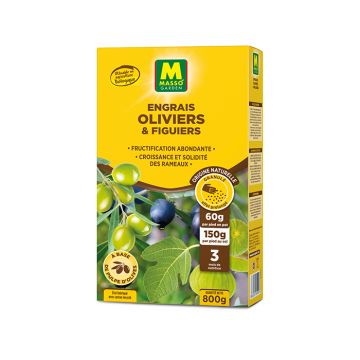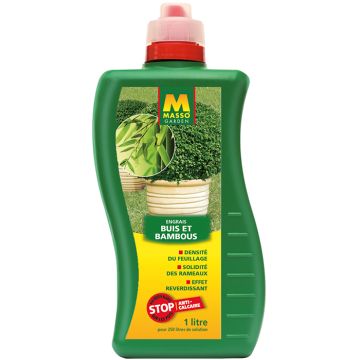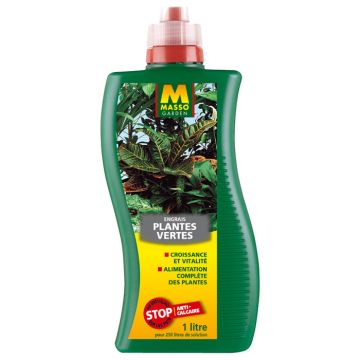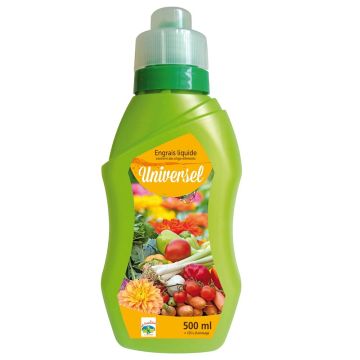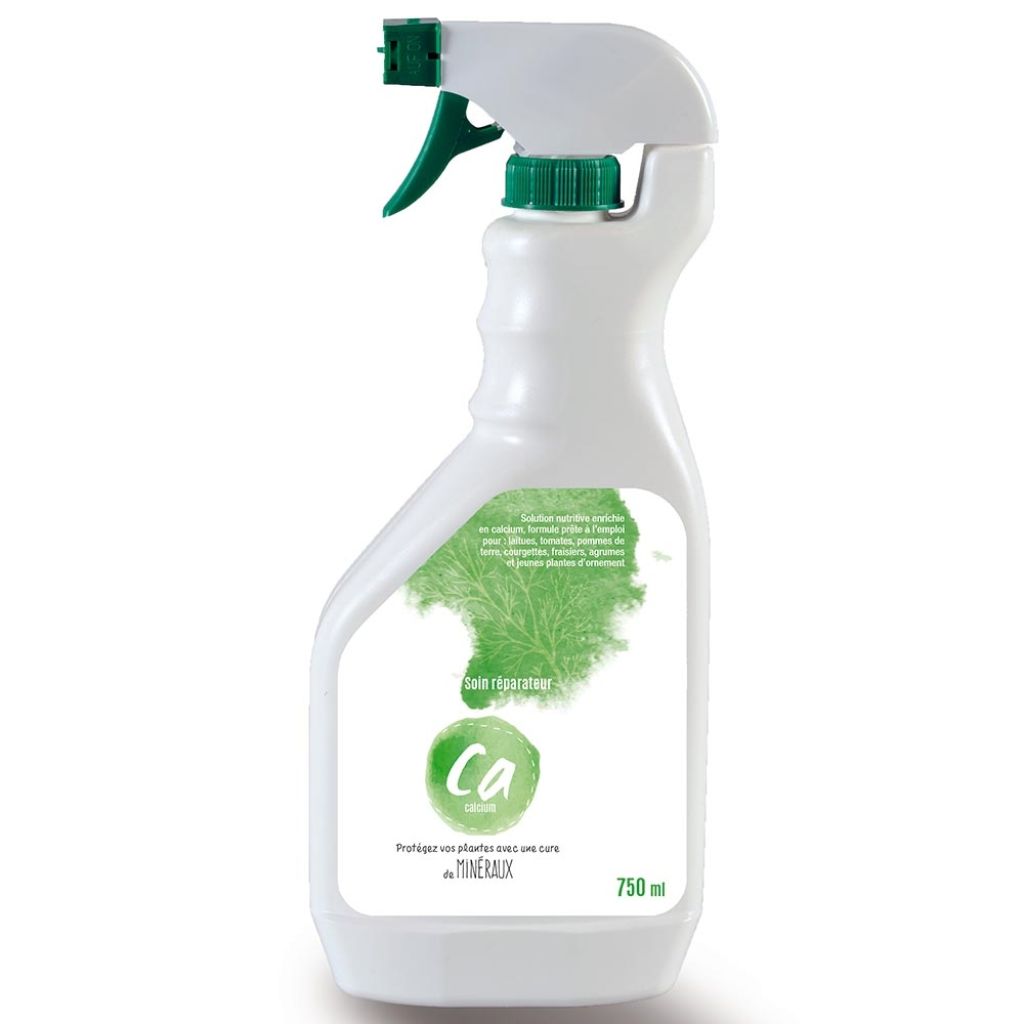

750ml Calcium (Ca) Anti-deficiency Spray
750ml Calcium (Ca) Anti-deficiency Spray
This item cannot be shipped to the selected country
Delivery charge from €5.90
More information
Schedule delivery date,
and select date in basket
We guarantee the quality of our plants for a full growing cycle, and will replace at our expense any plant that fails to recover under normal climatic and planting conditions.
From €5.90 for pickup delivery and €6.90 for home delivery
Express home delivery from €8.90.
This anti-deficiency treatment with calcium is a ready-to-use solution for preventing and treating calcium deficiencies, which specifically affect certain vegetable, fruit, or floral crops when the soil is unbalanced or depleted. Calcium deficiency manifests itself through various symptoms, which may vary depending on the plants, but it is essential to be able to detect them in order to apply the treatment appropriately. Convenient and very easy to use, this 750ml spray treatment is applied directly to the vegetation of the deficient plant.
To live and multiply, plants need water, about twenty essential nutrients that they find in mineral form in the soil, carbon dioxide (CO2) present in the air, and solar energy essential for photosynthesis. The basic elements, called macronutrients, are nitrogen (N), phosphorus (P), and potassium (K). They must be present in the soil in significant quantities. The secondary elements, less predominant but nevertheless essential, are calcium (Ca), sulphur (S), and magnesium (Mg). Finally, the trace elements, necessary in very small quantities, are represented by boron (B), iron (Fe), manganese (Mn), molybdenum (Mo), copper (Cu), zinc (Zn), chlorine (Cl), sodium (Na), cobalt (Cao), vanadium (V), and silicon (Si).
The role of calcium in plants: it is a major component responsible for the cohesion of the cell wall, where it is combined with plant proteins in the form of calcium pectinate. When this element is lacking or cannot be properly assimilated, the newly forming tissues are deformed. Calcium is also essential for certain enzymatic activities. This element is absorbed by the plant's roots and transported in the sap to the new shoots where it is used.
Calcium deficiency often manifests in unbalanced, very acidic and poor, porous and filtering soils. Insufficient crop rotation can also be the cause of a deficiency in secondary elements, as plants excessively draw resources from the soil without sufficient replenishment from external sources. The crops most commonly affected by calcium deficiency are: lettuce and related salads, tomatoes, potatoes, zucchinis, strawberries, citrus trees, as well as certain ornamental young plants such as Poinsettias, for example. Affected plants often exhibit browning on old leaves, yellowing of young shoots, and the appearance of necrosis on fruits and vegetables. The 'blossom-end rot' in tomatoes is probably the most well-known manifestation of this deficiency among gardeners.
This ready-to-use liquid treatment helps prevent calcium deficiency in advance or resolve it in affected plants.
Instructions for use:
- Spray directly onto the plant
- Use at least 45 days after planting
- Apply preventively every 15 days
- Once a week when symptoms appear
- Use from April to September
Fertilizer for mineral nutrient solutions NF U 42-004. Ready-to-use solution of major and secondary elements
Technical features

Detailed features
Tips
Tips
Other Complete and universal fertilisers
This item has not been reviewed yet - be the first to leave a review about it.
Haven't found what you were looking for?
Hardiness is the lowest winter temperature a plant can endure without suffering serious damage or even dying. However, hardiness is affected by location (a sheltered area, such as a patio), protection (winter cover) and soil type (hardiness is improved by well-drained soil).

Photo Sharing Terms & Conditions
In order to encourage gardeners to interact and share their experiences, Promesse de fleurs offers various media enabling content to be uploaded onto its Site - in particular via the ‘Photo sharing’ module.
The User agrees to refrain from:
- Posting any content that is illegal, prejudicial, insulting, racist, inciteful to hatred, revisionist, contrary to public decency, that infringes on privacy or on the privacy rights of third parties, in particular the publicity rights of persons and goods, intellectual property rights, or the right to privacy.
- Submitting content on behalf of a third party;
- Impersonate the identity of a third party and/or publish any personal information about a third party;
In general, the User undertakes to refrain from any unethical behaviour.
All Content (in particular text, comments, files, images, photos, videos, creative works, etc.), which may be subject to property or intellectual property rights, image or other private rights, shall remain the property of the User, subject to the limited rights granted by the terms of the licence granted by Promesse de fleurs as stated below. Users are at liberty to publish or not to publish such Content on the Site, notably via the ‘Photo Sharing’ facility, and accept that this Content shall be made public and freely accessible, notably on the Internet.
Users further acknowledge, undertake to have ,and guarantee that they hold all necessary rights and permissions to publish such material on the Site, in particular with regard to the legislation in force pertaining to any privacy, property, intellectual property, image, or contractual rights, or rights of any other nature. By publishing such Content on the Site, Users acknowledge accepting full liability as publishers of the Content within the meaning of the law, and grant Promesse de fleurs, free of charge, an inclusive, worldwide licence for the said Content for the entire duration of its publication, including all reproduction, representation, up/downloading, displaying, performing, transmission, and storage rights.
Users also grant permission for their name to be linked to the Content and accept that this link may not always be made available.
By engaging in posting material, Users consent to their Content becoming automatically accessible on the Internet, in particular on other sites and/or blogs and/or web pages of the Promesse de fleurs site, including in particular social pages and the Promesse de fleurs catalogue.
Users may secure the removal of entrusted content free of charge by issuing a simple request via our contact form.
The flowering period indicated on our website applies to countries and regions located in USDA zone 8 (France, the United Kingdom, Ireland, the Netherlands, etc.)
It will vary according to where you live:
- In zones 9 to 10 (Italy, Spain, Greece, etc.), flowering will occur about 2 to 4 weeks earlier.
- In zones 6 to 7 (Germany, Poland, Slovenia, and lower mountainous regions), flowering will be delayed by 2 to 3 weeks.
- In zone 5 (Central Europe, Scandinavia), blooming will be delayed by 3 to 5 weeks.
In temperate climates, pruning of spring-flowering shrubs (forsythia, spireas, etc.) should be done just after flowering.
Pruning of summer-flowering shrubs (Indian Lilac, Perovskia, etc.) can be done in winter or spring.
In cold regions as well as with frost-sensitive plants, avoid pruning too early when severe frosts may still occur.
The planting period indicated on our website applies to countries and regions located in USDA zone 8 (France, United Kingdom, Ireland, Netherlands).
It will vary according to where you live:
- In Mediterranean zones (Marseille, Madrid, Milan, etc.), autumn and winter are the best planting periods.
- In continental zones (Strasbourg, Munich, Vienna, etc.), delay planting by 2 to 3 weeks in spring and bring it forward by 2 to 4 weeks in autumn.
- In mountainous regions (the Alps, Pyrenees, Carpathians, etc.), it is best to plant in late spring (May-June) or late summer (August-September).
The harvesting period indicated on our website applies to countries and regions in USDA zone 8 (France, England, Ireland, the Netherlands).
In colder areas (Scandinavia, Poland, Austria...) fruit and vegetable harvests are likely to be delayed by 3-4 weeks.
In warmer areas (Italy, Spain, Greece, etc.), harvesting will probably take place earlier, depending on weather conditions.
The sowing periods indicated on our website apply to countries and regions within USDA Zone 8 (France, UK, Ireland, Netherlands).
In colder areas (Scandinavia, Poland, Austria...), delay any outdoor sowing by 3-4 weeks, or sow under glass.
In warmer climes (Italy, Spain, Greece, etc.), bring outdoor sowing forward by a few weeks.

































